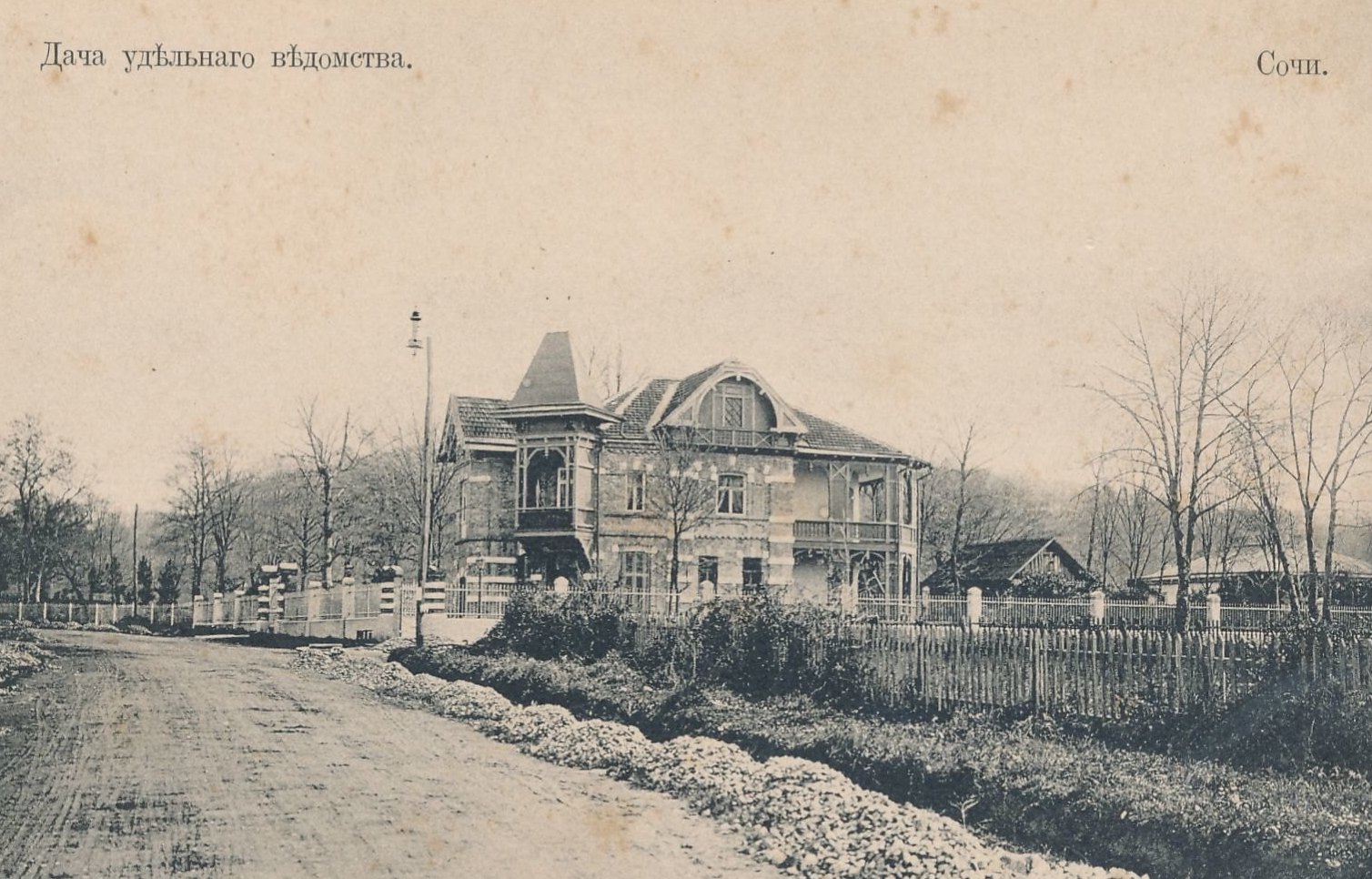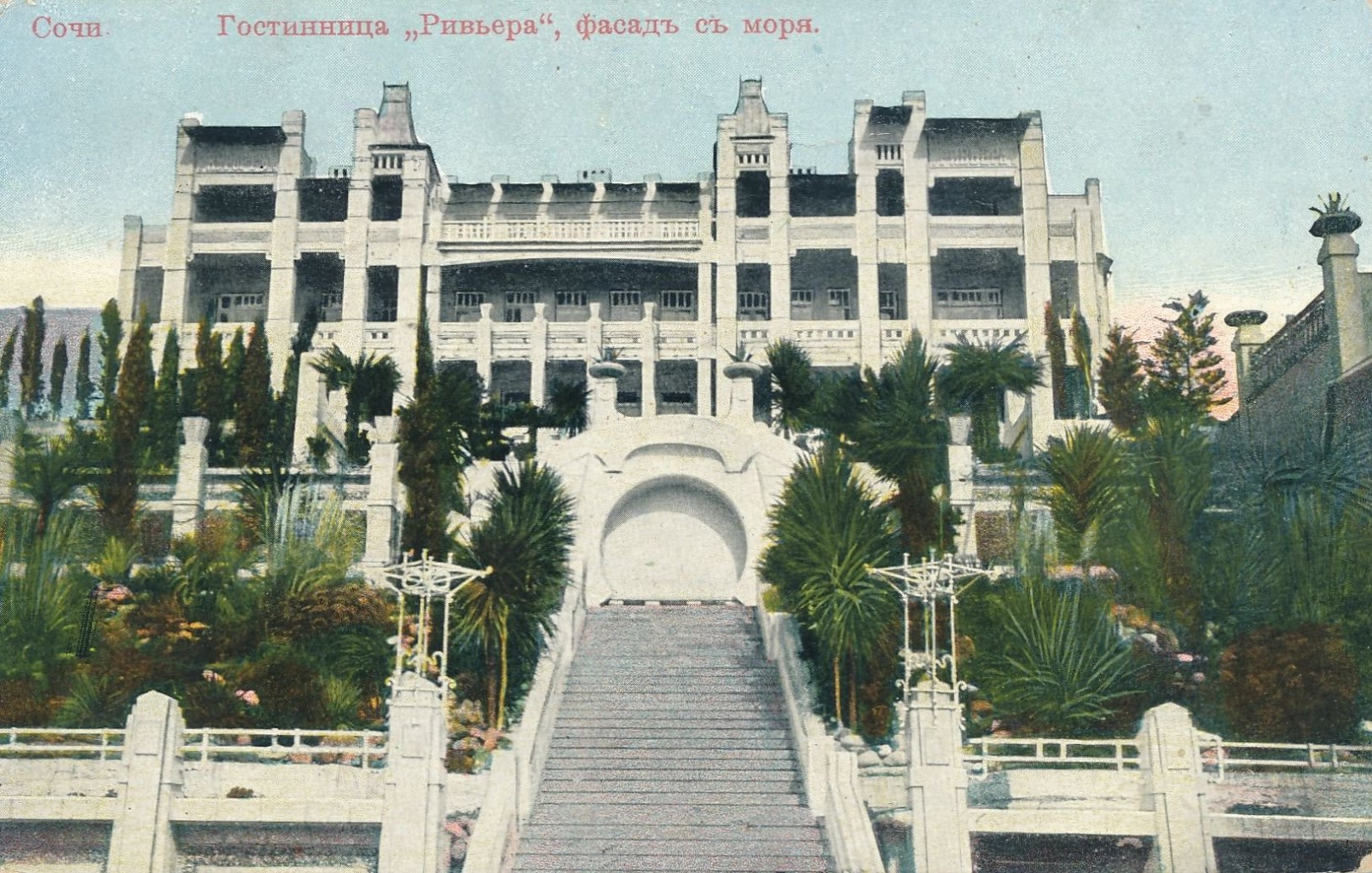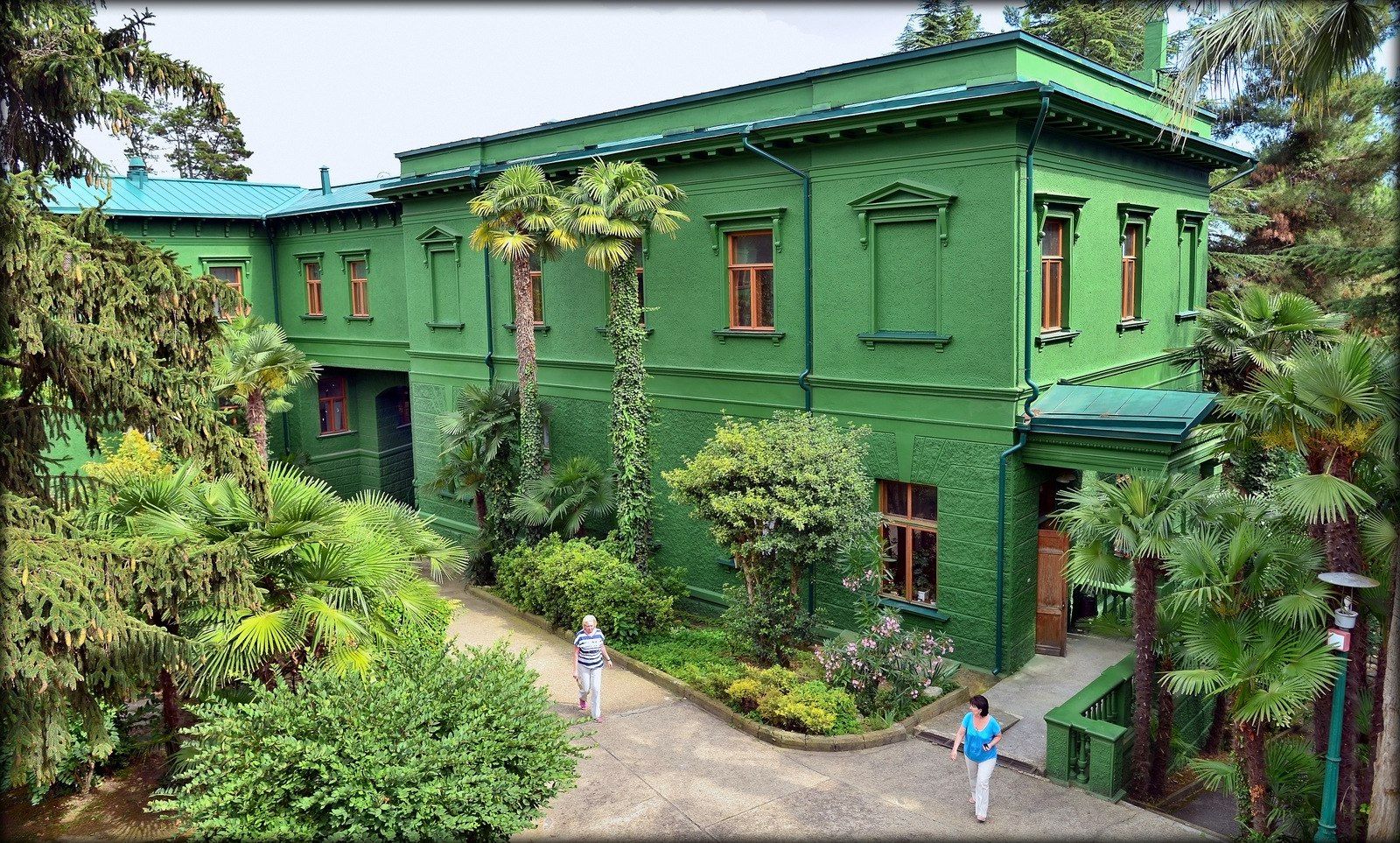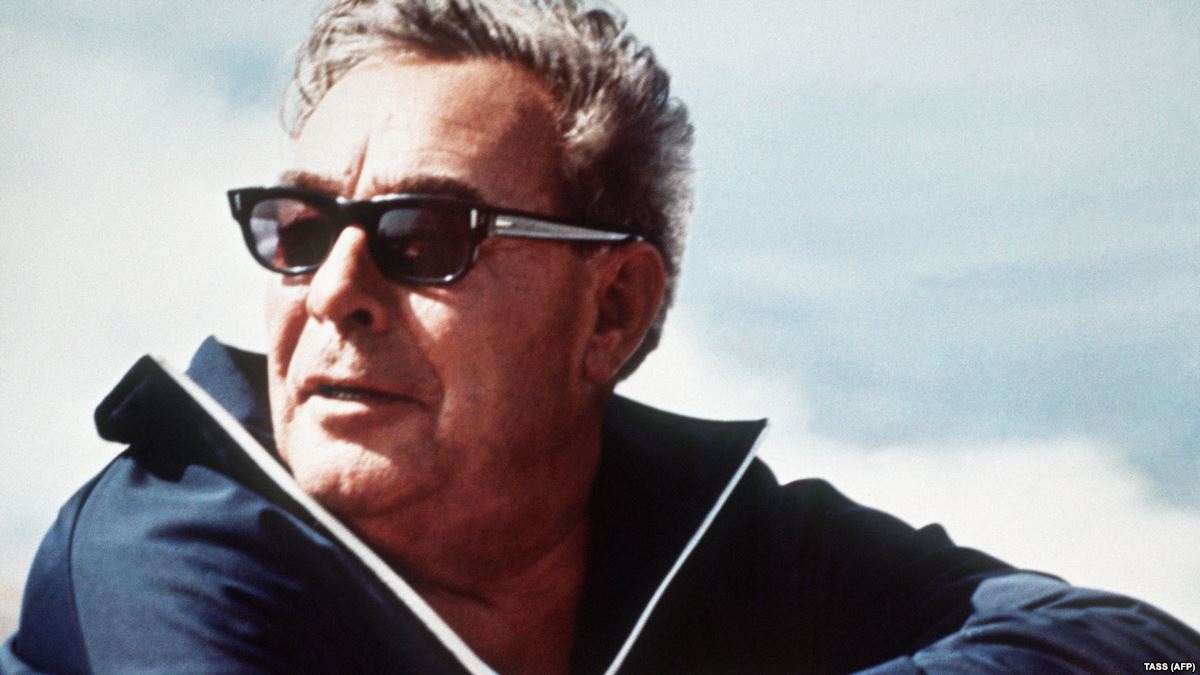The catchphrase from the film ‘Moscow Doesn’t Believe in Tears’ saying that every Soviet person has vacationed in Sochi at least once in life is not just a figure of speech. Indeed, the main resort city of the country was and is visited by very different people, and the leaders of Russia were and are among them. The EcoTourism EXPERT’s correspondent tells the readers where the ‘royal’ fruits grow, what spa treatment Stalin got in Sochi, what Brezhnev bought in the resort city, how Yeltsin saved a ‘drowning woman’, and other things.

Rest like a tsar
The Sochi’s history as a resort town began back in 1909 when the first health resort Caucasian Riviera was built there. Officials and wealthy entrepreneurs came to the Black Sea coast of the Caucasus to relax. Nicholas II (Nikolai II), the Emperor of Russia, purchased the Tsar’s Playground Estate in the district that is now the Dagomys District of Sochi. The tsar had never really been to the seaside city; he wanted to visit it once, but his ship was unable to get ashore because of a storm. Nicholas II preferred to spend his holidays in Yalta, a town in the Crimea. And in the tsar’s Playground Estate, the manager of the sovereign’s estates Grigory Uspensky laid out a huge orchard occupying several hectares of land. Pears, cherries, Hungarian plums and more than 26 varieties of grapes were grown there for the tsar family. At the same time, fruits from the tsar’s Playground Estate also were sold in a regular shop in Sochi. The building still preserved in Sochi is located on 6, Teatralnaya Street. By the way, dairy products and fruits in the shop were even cheaper than in the market, so many Sochi residents went to it to buy everything at the ‘tsar price’. In the 1920s, when the Red Army arrived, the tsar’s Playground Estate was given over to a hospital township, and in the 1970s, it became part of the Dagomys hotel complex.

The Caucasus Nature Reserve appeared in Sochi thanks to Nicholas II. At the end of the 1880s, the future emperor admired the unique beauty of the area in the upper reaches of the Mzymta, Malaya Laba and Shakhe rivers. The Romanovs empire family rented the land plot from the Kuban Cossack Army for hunting. Members of the tsar’s family hunted rarely, but a protected reserved area appeared in the Caucasus where access was limited to people, any logging was prohibited there, and the local authorities protected the animals in this area. As a result, the Caucasian Nature Reserve appeared in 1924 - already in the Soviet days - thanks to the initiative of the forester Christopher Shaposhnikov.
A resort town for a working-class
In 1919, Vladimir Lenin, a new leader of the country, signed a decree ‘On Medicinal Areas of National Importance’, commonly called ‘On Resorts’. The existing dachas (holiday homes) in Sochi were nationalized and municipalized, and health resorts and boarding houses were set up on their basis. However, the resort town was still a small seaside town. It was located on the area from Mamaika to Khosta, its population barely exceeded 10 thousand people, the town budget was under two million rubles a year. There were three small hydropathic clinics using Matsesta thermal spring water and set up before the Russian revolution (1917) by entrepreneur Mikhail Zenzinov and doctor Viktor Podgursky. Bath procedures were not particularly popular; many people simply did not know about them. The spa resort was very small, the situation changed only by chance.
In those years, the influence of Joseph Stalin grew in the Kremlin. Stalin who made rapid strides towards the high power was forced to take breaks for some days due to a joint disease. Someone advised him to go to Sochi and get treatment at the Matsesta spa resort. In the summer of 1925, Stalin came to the resort town for the first time and rented a room at the Krasnaya Moskva health resort located on Primorskaya Embankment in the building of the former Grand Hotel. He took a course of treatment using the Matsesta baths and felt relief. From 1929, the Secretary General of the Central Committee of the All-Union Communist Party of the Bolsheviks came to Sochi on vacation every year. He went to Sochi every September, except during the war years. It was Joseph Stalin who turned the seaside town into a ‘proletarian’ resort city. In 1933, he issued a decree to allocate 1.5 billion rubles for the development of Sochi, and the construction of resorts and health centers in Sochi was announced a top-priority project. During the first five-year plans alone, more than 15 resorts and health centers looking like palaces appeared on the Black Sea coast of the Caucasus. At the same time, in 1938, not far from the Matsesta thermal springs, the Green Grove dacha surrounded by green trees and bushes was built for the leader of the Soviet Union. Stalin’s daughter, Svetlana Alliluyeva, recalled in her book ‘Twenty Letters to a Friend’, “He never swam - he simply cannot swim, he didn’t like to sit in the sun and only liked to walk in the forest, in the shade.”

By the way not only the ‘leader of the peoples’, but also creative figures, wanted to have rest at the Green Grove dacha. One day, actor Mikhail Gelovani who played the role of Joseph Stalin in the films ‘The Oath’ and ‘The Fall of Berlin’, asked Stalin’s permission to spend a vacation there in order to better get used to the role. The Generalissimo Stalin advised the actor to begin ‘getting used to the character’ in the Turukhansk region where he, Stalin, spent his first exile. Now, unfortunately, it is impossible to stay overnight in Stalin’s bedroom. But the Green Grove dacha has been preserved; the main structures have never been repaired in it; and visitors can take a tour of the building.
The Matsesta baths helped Leonid Brezhnev, another Soviet leader. He was an elderly man, his joints hurt. But neither the Kremlin procedures nor the famous Karlovy Vary helped. One day, Brezhnev asked a doctor “What would you advise me as an ordinary patient, and not the Secretary General?” The doctor answered “Of course, Matsesta baths.” As a result, Leonid Brezhnev entered the spa treatment room with the help of his security guards and came out of it jumping. Since then, Brezhnev spent every April and September at the resort in Sochi. Unplanned visits often happened: in the morning, Sochi residents saw him on TV signing documents in the Kremlin, and in the evening, they watched his motorcade on Kurortny Boulevard in Sochi.

During one of these visits, a funny incident happened to Brezhnev. On the way to the Matsesta spa resort, the Secretary General looked into the Potseluevsky grocery store, the main one in Sochi, to buy 200 grams of sausage. Then he went to the liquor department where he heard the cruel words from the saleswoman, “I won’t sell cognac to you. It’s not eleven o’clock yet.” She just did not recognize Brezhnev. But when the director of the Sochi meat processing plant got to know about this, the decision was taken to improve the quality of the meet products just in case that the Secretary General suddenly would like to buy more sausages. But in addition to improving the quality of sausage, Leonid Brezhnev did a lot for Sochi, especially for young residents. For a long time, the children’s city hospital was located in old buildings. After a chance meeting with the chief physician of the hospital, Leonid Brezhnev ordered to allocate over 6 million rubles for the hospital reconstruction.
Take a tennis racket and get on your skis
Boris Yeltsin, the first president of Russia, like his colleagues spent his vacation in Sochi. After the coup d’état collapsed in 1991, all members of Boris Yeltsin’s team gathered at the Bocharov Ruchey dacha wherr a document known as a ‘Burbulis Memorandum’ was actively discussed, and a decision was made on the future disintegration of the USSR into independent states.
Boris Yeltsin brought playing tennis into fashion in the seaside city. There were no tennis courts at the Bocharov Ruchey residence, so Boris Nikolaevich played tennis at the Rus health resort. High-ranking officials and businessmen became his tennis playing partners - everyone wanted to compete with the President in tennis. Yeltsin played for about five hours a day, and during the breaks he ate fresh fruit and drank mineral water. “Excitement, physical tension and active sport competition make you forget troubles, even political ones,” wrote Boris Nikolaevich in the book ‘Notes of the President’. Health resort workers recalled that immediately after hard and long tennis playing he used to sit in a chair and fall asleep at once.
Yeltsin also swam in the sea, even in winter. When rumors appeared in the 1990s that the first president of Russia was very ill and even wore a corset, Boris Nikolayevich went into the icy water in front of journalists and photographers. And when he got out of the sea he asked “Do I look like a sick man?” While on vacation in Sochi, Yeltsin managed to be a rescuer. Walking along the beach at the Dagomys hotel complex, he heard one of the vacationers shouting “Boris Nikolaevich, help me get out of the water.” Together with the guards, he helped the ‘drowning’ woman get out of the sea. Interestingly, it was during the flight to Sochi that Yeltsin was given the famous ‘letter of the seven’. The content made the President very angry because his inner circle hinted that he should drink less alcohol. How can anyone drink less alcohol when in Sochi?
After Yeltsin, the whole country gave up playing tennis and started skiing. On his first visit to Sochi, russian president Vladimir Putin went to Krasnaya Polyana. The vacationers who were on the slopes of the Alpika-Service complex were greatly astonished - the head of state easily rushed down the slope and made an amazing turn.
Of course, when in Sochi, russian president Vladimir Putin spends most of his time at the Bocharov Ruchey state residence. Tourists cannot get to it as the place of ‘national importance’. But tourists can visit another place where the head of Russia likes to have a cup of tea. To do this, people need to come to the Tea Houses in Dagomys. An Arkhangelsk carpenter Ivan Donchakov and his sons built this unusual wooden palace with towers in 1979 in the forest near the village of Uch-Dere. It was decorated by craftsmen from all over the country. Tula sent wonderful samovars to the Tea Houses. Masters of the St. Petersburg porcelain factory prepared unique tea sets for this place. Palekh artists created the painting ‘Tales by Pushkin’. Large decorative cover ‘Tea Party in the Gazebo’ was made by Vologda craftswomen. Craftsmen from the Bogorodskoye village (near Moscow) created carved panel pictures for the Tea Houses. Experienced folk painters from Nizhny Novgorod designed the ‘Khokhloma Upper Room’. Sergei Egorov, a nearly blind craftsman from Yaroslavl, created the ‘Tea Flowers’ tiled fireplace. The most beautiful trays with flowers from Zhostovo, enamel from Rostov-the-Great, beautiful glass figurines from Gus-Khrustalny, and decorative Dymkovo toys from the banks of the Vyatka were brought to the Tea Houses. A real treasure-house of the Russian folk art, this place turned out to be very beautiful. In addition to all the stunning things, they serve tea here made from the tea leaves grown in the surrounding mountain plantations, and visitors can taste delicious honey, fig and feijoa jam, and pies. Everyone liked the Tea Houses, and Vladimir Putin is no exception. It was here that the president of Russia met with Italian prime minister Silvio Berlusconi and the leaders of Belarus and Kazakhstan.


